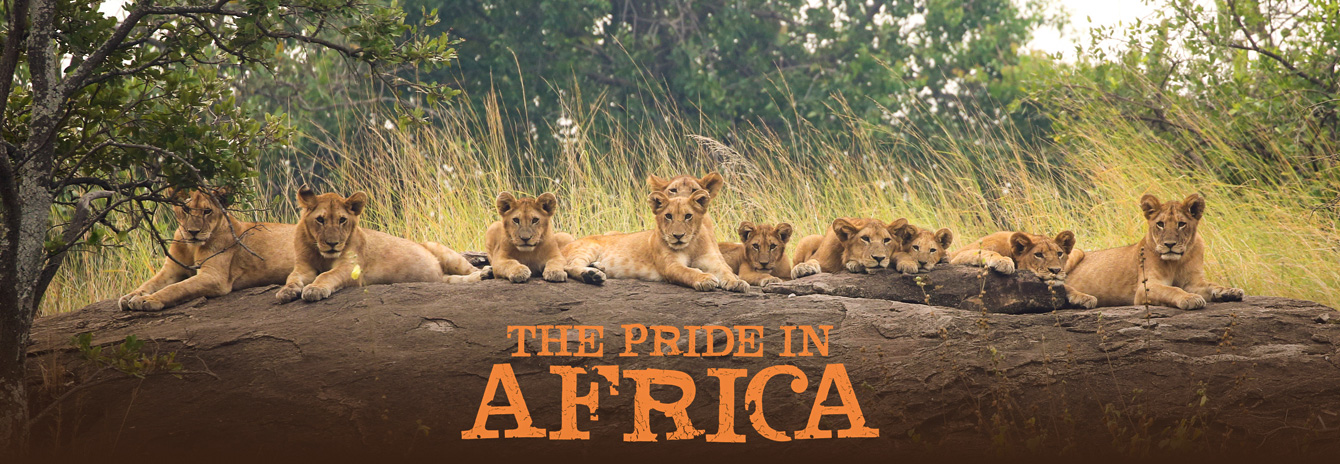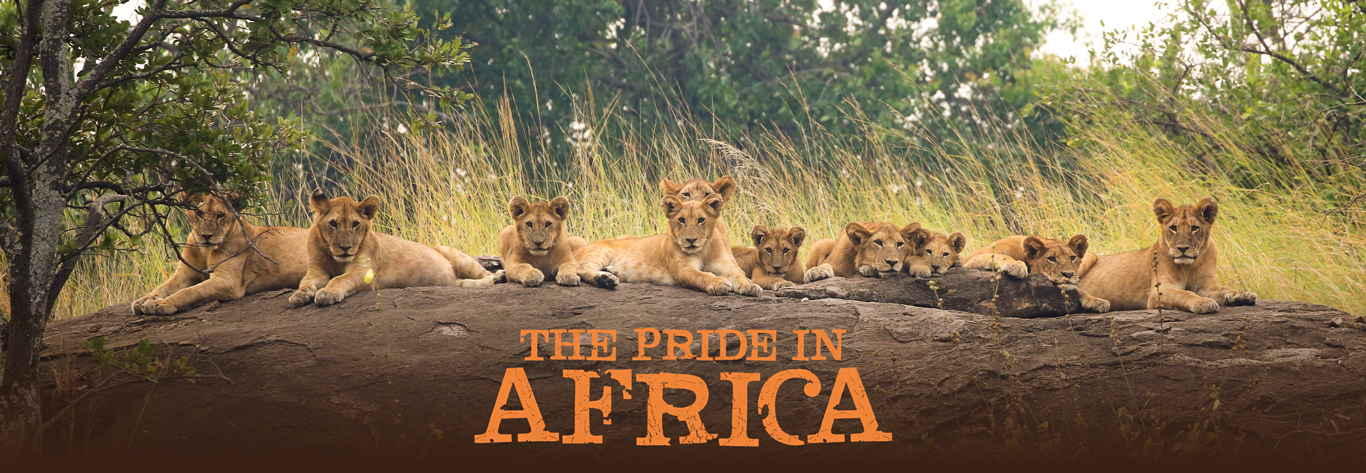
Africa
-

Into the wild
Africa
Into the wild
Lions are the only cats that live in groups called prides. Prides are family units that may include up to three males, a dozen or so females and their young. African lions live in central and southern Africa, where the territory consists of scrubs, grasslands or open woodlands. Males patrol their territory and protect the pride from intruders.
-

When the beast awakens
Africa
-

Eyes on the prize
Africa
Eyes on the prize
Beautiful and magnificent in appearance, a lion can grow up to 500 pounds. The male lion has a flamboyant ruff of remarkably long hair around the head and neck, which is commonly known as the mane. The mane begins to develop when they are about 10 months old. A good gauge of a male lion’s age is his mane. The darker the mane, the older the lion.
-

Hair-raising affair
Africa
-

Strike a pose
Africa
Strike a pose
According to fossil deposits, the black-backed jackal is one of the oldest known dog species. They are among the most significant vector of rabies in southern Africa. They often give high wailing calls in the early evenings, where one jackal answers, until a chorus builds up. Like all jackals they are monogamous and form life-long mating bonds.
-

Seeing double
Africa
Seeing double
Male ostriches are called roosters and females are called hens. Found in the hot savannas and woodlands of Africa, they are the largest flightless birds. To get a female’s attention, males bow and flap their wings outward, displaying their plumage. Males and females change colour when they are ready to mate. The males’ beak, shin and neck change to a red colour, while the females’ feathers turn to a silvery colour.
-

Fill the bill
Africa
-

Crowning elegance
Africa
Crowning elegance
Standing at over a metre tall, the large and elegant grey crowned crane graces many of Africa’s wetlands. Males tend to be larger than females, but are otherwise undistinguishable. Unlike other cranes, these cranes roost in trees. Their chicks are precocial, meaning they can run as soon as they hatch. Grey crowned crane is the national bird of Uganda.
-

Teamwork makes the dream work
Africa
-

Sitting pretty
Africa
Sitting pretty
The shy and elusive bushbuck is rarely found on open land. They have a lot of individual and regional differences in their coat colours and patterns. Usually most active during early morning, bushbucks become entirely nocturnal in areas where they are likely to be disturbed frequently during the day. When alarmed they will sink to the ground and lie flat, or bound away making a series of hoarse barks.
-

Look into my eyes
Africa
Look into my eyes
Only male lions have manes, the impressive fringe of long hair that encircles their heads. While male lions protect the pride’s territory, female lions are the pride’s primary hunters. All the females of a group mate at the same time. After the first six weeks, the cubs are taken care of by all the females and will often nurse from females other than their mothers.
-

On a hunch
Africa
On a hunch
Bushbucks are solitary animals who make for slow and clumsy runners because of their hunched-up gait. But they are good swimmers and can jump even 6-foot high fences. They are most vulnerable to predators such as lions, leopards, hyenas and cheetahs when on the run. But their sharp horns render them very dangerous foes.
-

In the teeth of danger
Africa
In the teeth of danger
The lion has always been hailed as a symbol of strength, power and ferocity. They are equipped with enormous fangs and incredibly powerful necks, forelimbs and claws that allow them to hunt the largest prey of any land animal. They regularly take down zebras and cape buffalo, and can also take on giraffes and elephants given the right situation.
-

Slip of tongue
Africa
Slip of tongue
The female lions hunt together, only occasionally being helped by the male members. When the hunt is over the adult males eat first. Female cubs live with the pride their entire lives, while male cubs are usually driven off the pride by the adult males when they are about 2 years old.
-

Top of the game
Africa
-

Pride of place
Africa
Pride of place
Lions are the only cats that live in groups, which are called prides. All of a pride’s lionesses are related and the female cubs stay with the group as they age. Females prefer their pride to have a large male coalition as it reduces the number of cubs lost during take-over of the pride by a new male, and also gives them a longer tenure. Far more canine than feline, lions stay in close knit groups, often maintaining life-long relationships.
-

Peek-a-boo
Africa
Peek-a-boo
Lion cubs are born with tawny black spots which eventually disappear as they grow older. When it is time to give birth, a lioness leaves her pride and has her cubs in dense cover. Cubs remain hidden for one to two months before being introduced to the rest of the pride. African male lions generally play no paternal role when it comes to provisioning of food to the cubs.
-

Blue feathered and bushy tailed
Africa
Blue feathered and bushy tailed
The superb starling bird is commonly found in East Africa. They have glossy blue-green upper parts with darker blue tinge on the nape with a relatively short and glossy tail in blue-green. It frequents open scrub, woodland, cultivated areas, lakeshores and places close to human habitation. This bird is usually found in large flocks.
-

Basking in the sun
Africa
Basking in the sun
Unlike any other cat species, members of the lion pride participate in raising their cubs. Lionesses have been known to nurse orphan cubs and raise them as their own. Even males have been observed protecting and babysitting. Males and females are ready to mate by the time they are 3 or 4 years old. All the lionesses in a pride mate at the same time.
-

Three’s Company
Africa
Three’s Company
The Masai giraffe, also known as the Kilimanjaro giraffe, is not only the largest giraffe but also the highest terrestrial animal in the world. The design of their legs and hooves makes them powerful. Hence, most predators avoid them as their one swift kick can easily kill them. The spots on this particular species are jagged compared to others. The males have darker spots than the females, with the dominant male having the darkest of all.






















